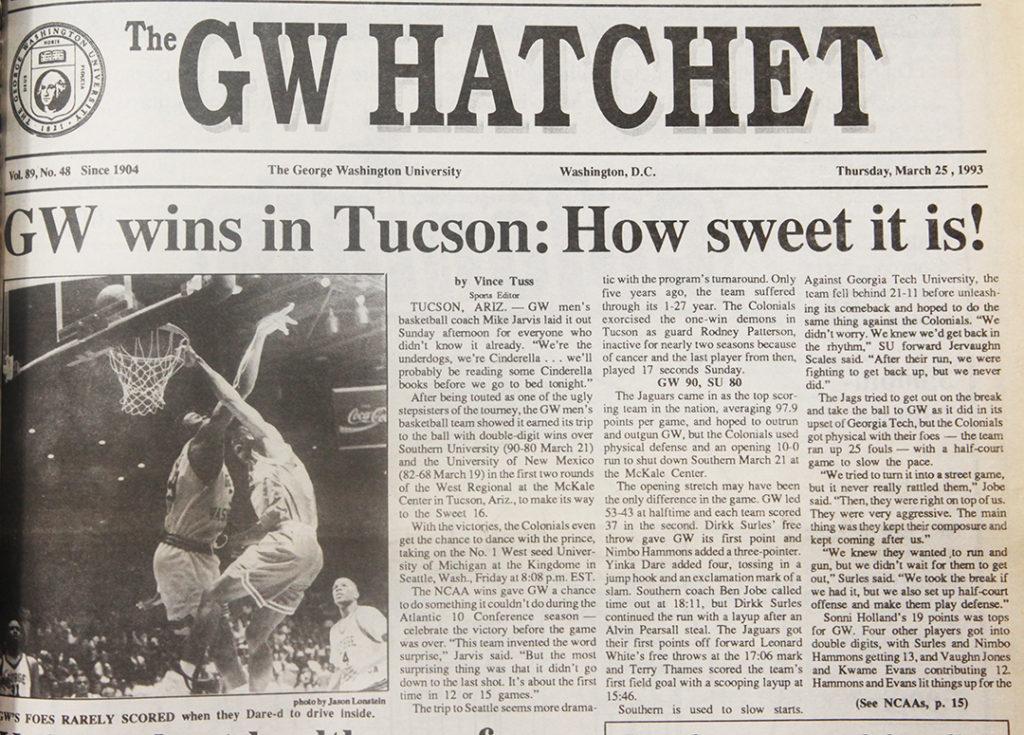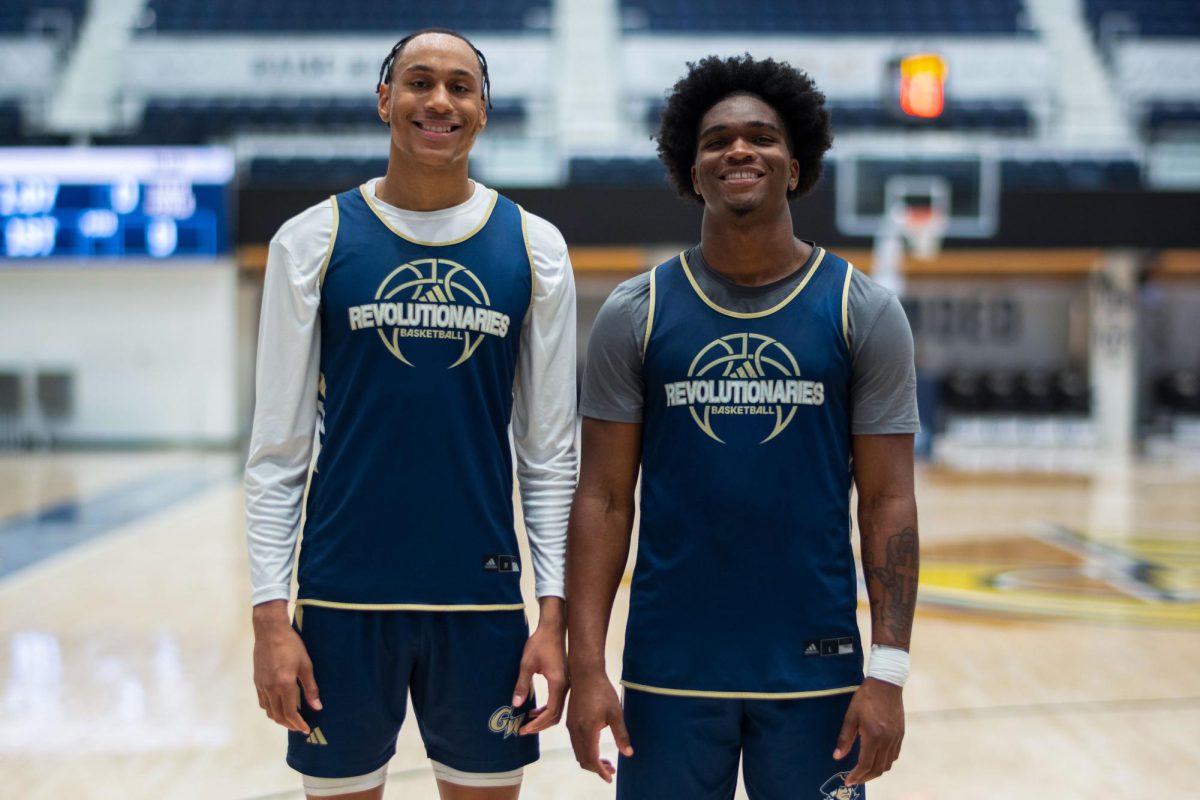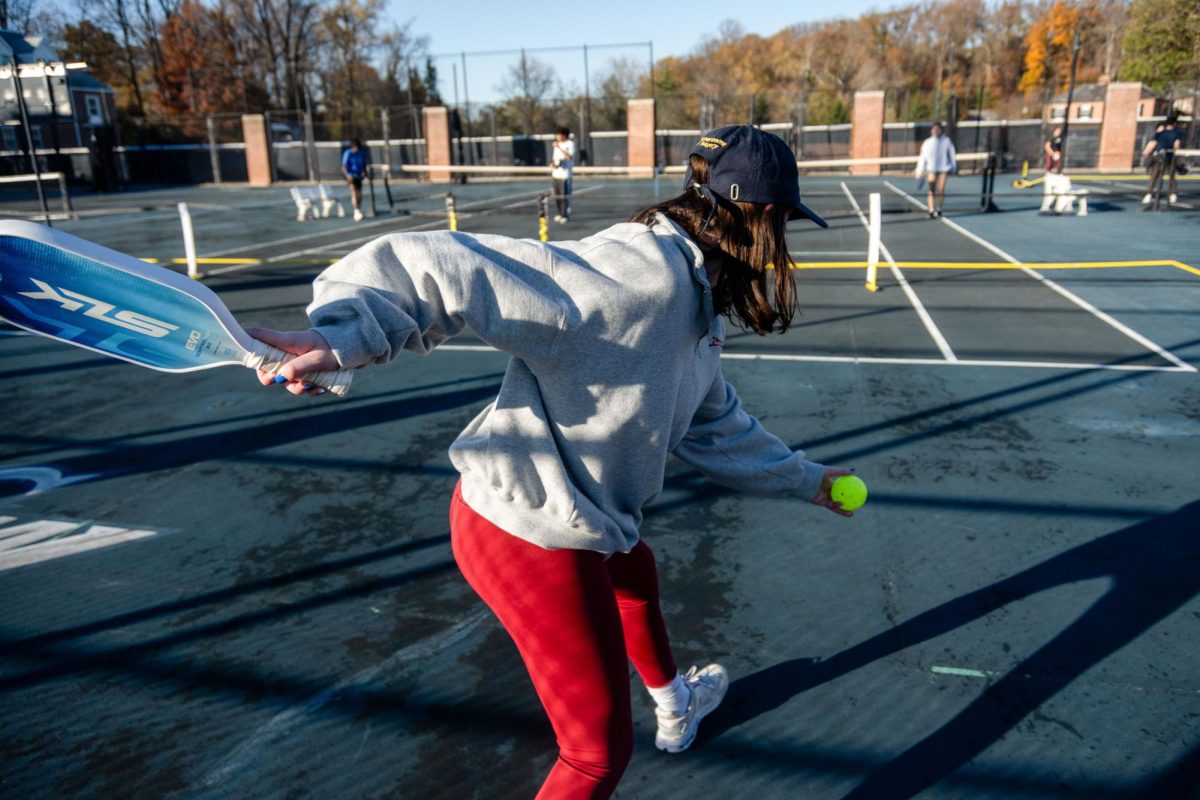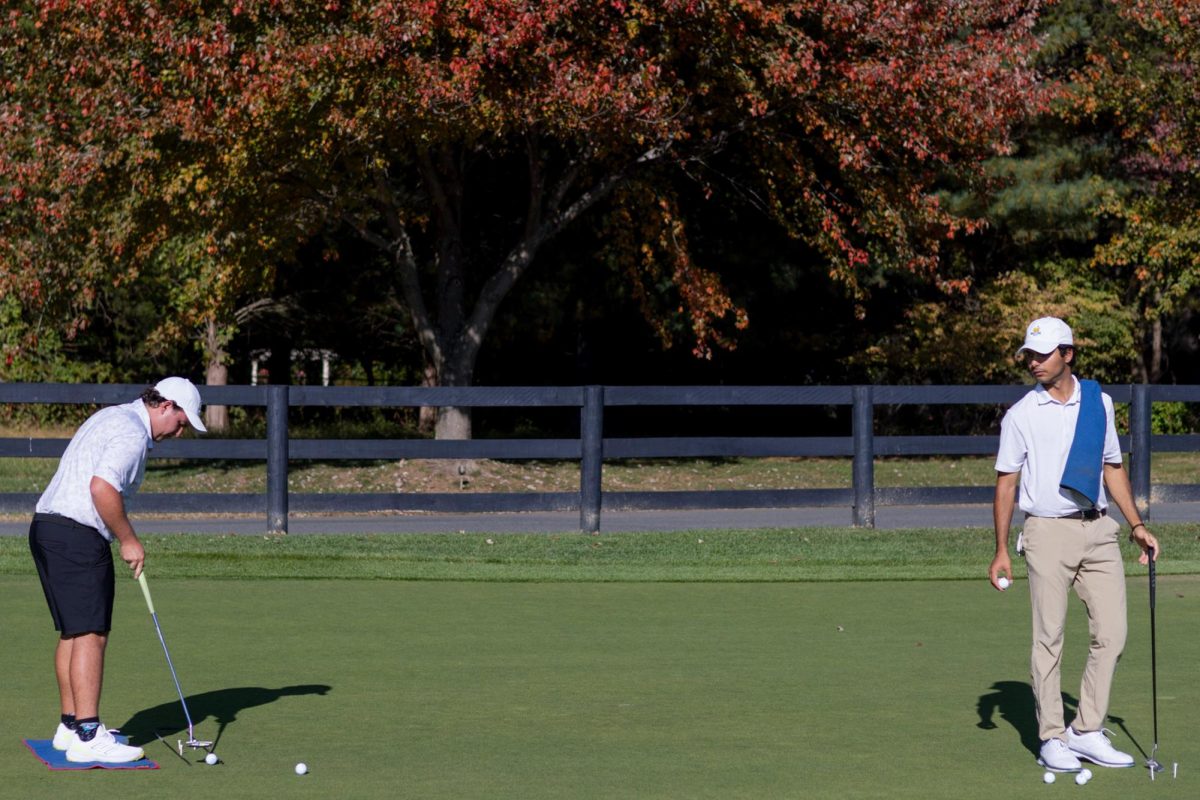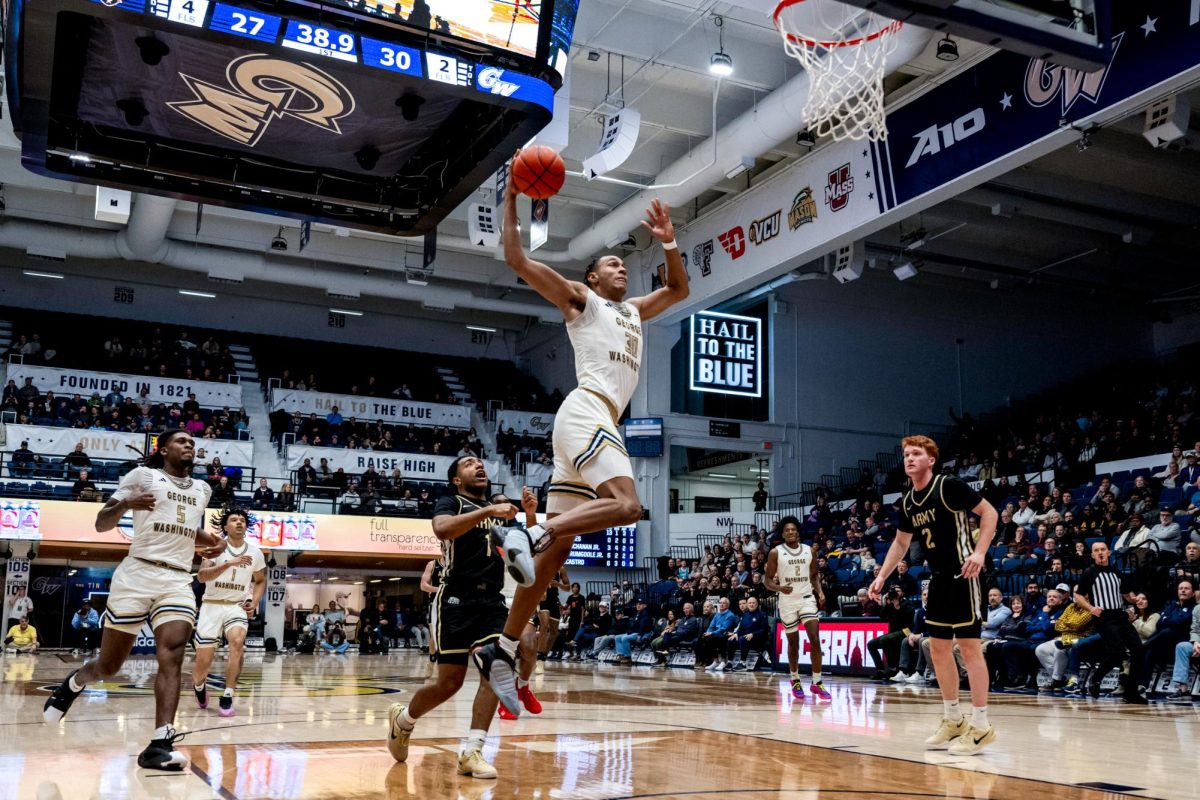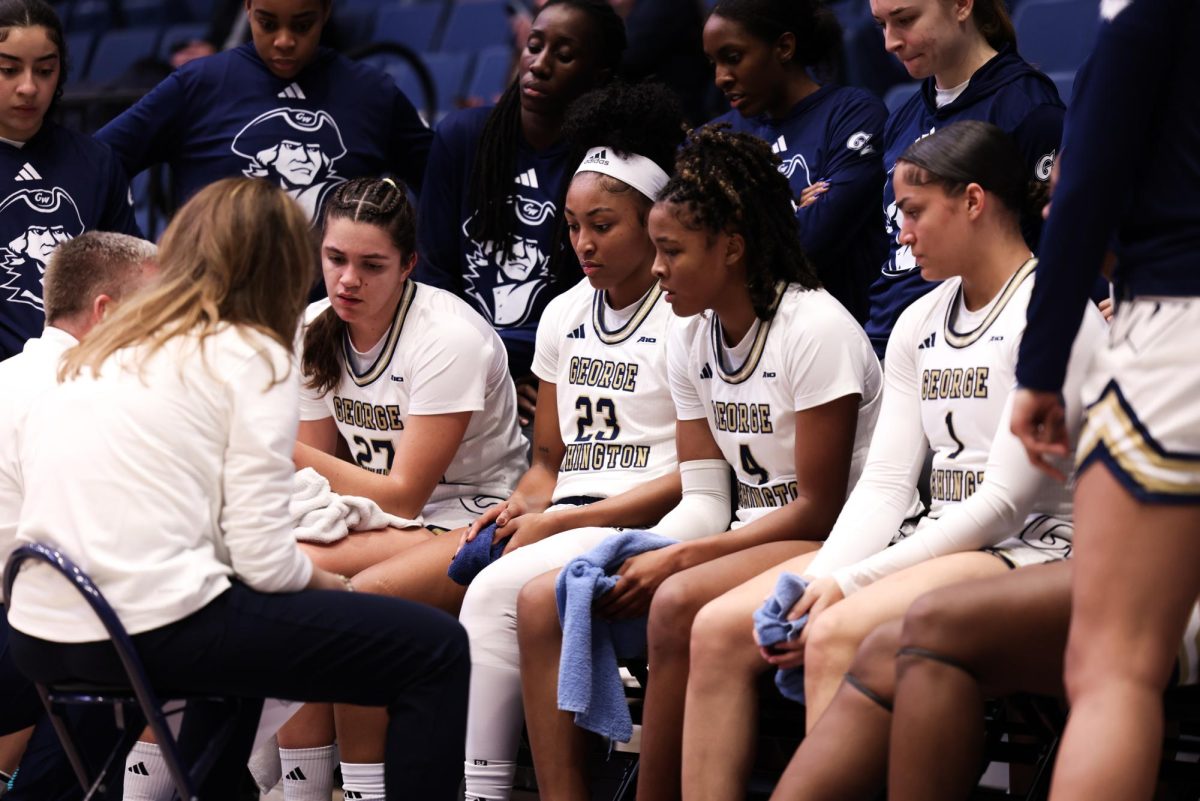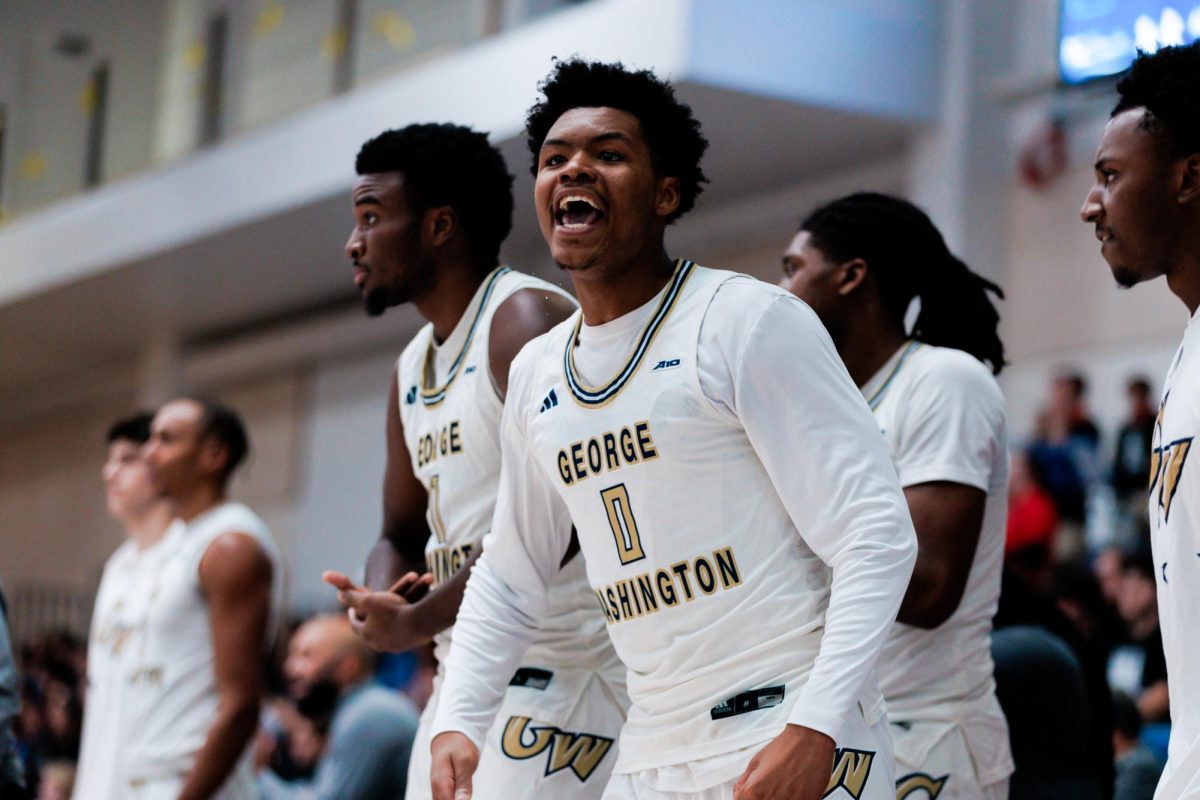In lieu of fall sports, we’re dusting off the history books and taking a look back on 10 of the best GW sports moments, ever. Here’s to hoping some old-fashioned nostalgia can keep us going until the restart.
No. 3: Men’s basketball makes Sweet 16 run
The 1992-93 men’s basketball team sealed itself in the annals of GW athletics history, becoming the first and only squad in the program’s 114 years to make it to the Sweet 16 of the NCAA Tournament.
Spearheaded by head coach Mike Jarvis and Sports Illustrated Freshman of the Year Yinka Dare, the Colonials made their deepest NCAA tournament run in team history. The squad charged into the tournament with an upset victory and a 10-point win in the second round before being eliminated by Michigan’s Fab Five.
Five seasons before GW’s run, the future of men’s basketball looked bleak as the team finished a program-worst 1-27. The ’90s ushered in a new generation of GW basketball masterminded by Jarvis, who tallied a .628 win percentage in his eight years in charge.
The Colonials opened the 1992-93 season hot, riding a seven-game win streak. A 10-2 nonconference record propelled the squad into Atlantic 10 play. The squad battled Temple to start its conference slate, losing in a tight 64-62 overtime tussle at the Smith Center.
But in its next meeting, GW would take down Temple for the first time in 10 years at McGonigle Hall. The Colonials routed Temple in a close 75–72 win, taking down a team that housed the eventual A-10 Player of the Year and future 1994 No. 17 NBA draft pick Aaron McKie.
The Colonials finished the regular season 21-9 with an 8-6 A-10 record. The squad opened postseason play on the wrong foot, bowing out of the A-10 Tournament with an 86–75 loss to Rhode Island. But their efforts throughout the season didn’t go unnoticed on Selection Sunday, and the Colonials were rewarded with a ticket to go dancing as a No. 12 seed.
The team hopped on a plane to Tucson, Arizona to play in the NCAA tournament for the first time in 32 years and only the third time in school history. GW started the tournament with a bang, upsetting No. 5 New Mexico 82–68. Freshman guard Kwame Evans came off the bench to sink a team-high 19 points, while Dare notched a double-double as a starter.
The team continued its run in the second round of play, defeating Southern 90–80, penciling GW for a trip to the Sweet 16. Five Colonials reached double-digit scoring, and the squad shot lights-out, shooting at a .467 clip from deep and a .515 clip from the field.
In a game summary after the Colonials’ win over Southern, New York Times reporter Tom Friend wrote that GW narrowly squeaked into the NCAA Tournament but “hardly looked overwhelmed” after entering the Sweet 16.
“GW, by all indications from the tournament committee, was the 62nd team invited to this 64-team field, although they hardly looked overwhelmed,” Friend wrote in The Times.
GW would need to keep the same level of composure as it took on No. 1 seeded Michigan. The Wolverines, led by one of the strongest recruiting classes in the nation dubbed the “Fab Five,” entered the tournament No. 3 in the nation with a 26-4 record.
The Colonials started off slow, missing their first 10 shots of the night and falling behind 15–2. Jarvis switched up the team’s strategy to a full-court press and freshman forward Vaughn Jones provided valuable points off the bench to stage a comeback. The Colonials earned their first lead of the game with under 11 minutes left, but Michigan would not go down easy.
With 1:20 remaining, GW pulled within a basket down 65–62. But the Wolverines outscored the Colonials 7-2 in the last 80 seconds, advancing to the Elite Eight and sending GW home early. Evans, who shined off the bench during GW’s run, led the team with 13 points and six rebounds on the night.
Despite the loss, GW’s memory of the 1993 NCAA Tournament was sweeter than Michigan’s. The Wolverines vacated five seasons worth of victories – including the 1992-93 season – after a booster was caught giving money to several players.
The 1992-93 squad landed GW basketball under a national spotlight, and the program would go on to return to the tournament four more times before the turn of the century. The team’s success even contributed to a boost in admissions.


